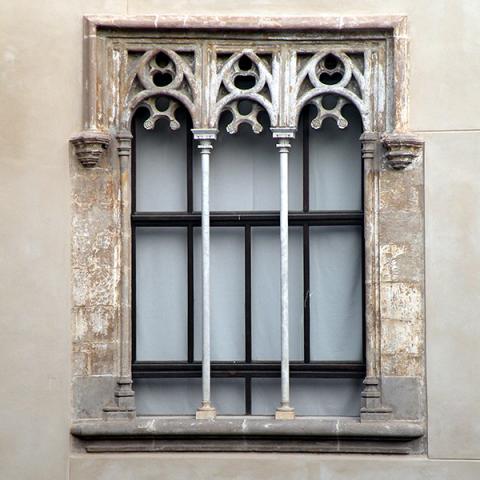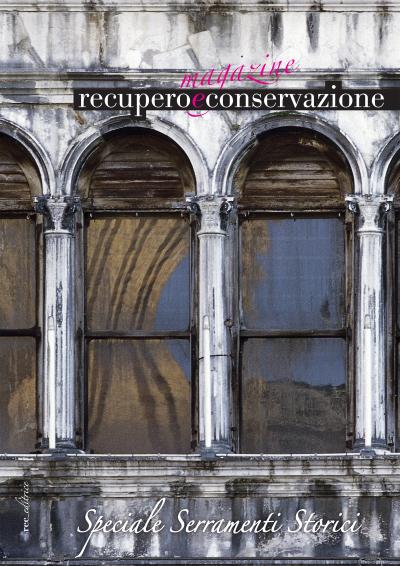L'incontro tra rec_magazine e Confartigianato Restauro
L’incontro tra Confartigianato Restauro e recuperoeconservazione_magazine è un approdo naturale dato l’intreccio secolare tra la manualità artigiana e le azioni di “recupero e conservazione” dei beni storici, artistici e architettonici del nostro Paese. I serramenti storici, che sono oggetto di questa monografia, ne sono una diapositiva e il “saper fare artigiano” nel restauro ligneo si inserisce perfettamente in un più ampio progetto conservativo garantendo professionalità e conoscenza aggiornata delle tecniche e dei materiali per un intervento armonico e conservativo. [...]
Premessa per il Lettore
Il serramento, elemento tecnologico che partecipa in maniera importante alla connotazione di un edificio, e ancor più nel caso di un edificio storico, è oggi ancora oggetto di troppa poca attenzione da parte chi si trova ad operare sull’architettura esistente.
Alla diffusa pratica della sostituzione in assenza di valutazioni sul valore documentale di questi elementi, si ritiene debba essere contrapposto un atteggiamento più attento e prudente, basato sulla conoscenza, che consenta di preservare i serramenti nel relativo contesto architettonico e di attuare al contempo interventi volti al miglioramento prestazionale e al contenimento energetico.
TRA CULTURA MATERIALE E AUTENTICITA'
Negli anni ’80 e ’90 […] venivano considerati marziani coloro che proponevano di conservare le testimonianze della storia della cultura materiale. Dopo le pietre, che forse erano più facili da conservare perché generalmente più formalizzate, l’attenzione si è rivolta ai mattoni, dopo un decennio agli intonaci e quindi alle finiture, fino ad arrivare ad oggi, quando altri marziani per la prima volta parlano di conservazione di serramenti.
MATERIAL CULTURE AND AUTHENTICITY
In the 80s and 90s [...] were considered ‘odd’ those people who wanted to preserve the testimony of the past. After the first conservation of the rocks, the attention moved to bricks and later to plasters. Now, for the first time we hear talking about the conservation of fixtures.
SOSTENIBILITÀ VERSUS SOSTENIBILITÀ
Il miglioramento dell’efficienza energetica nell’edilizia storica è ambito di studio sempre più praticato. La letteratura scientifica è in costante crescita e l’emanazione di linee guida da parte del Ministero per i Beni Culturali (Ottobre 2015) e della Comunità Europea (UNI EN 16883 – 2017) ne sono evidente testimonianza. Ciò nonostante, la necessità di trovare un equilibrio tra esigenze differenti, in un ambito in cui i valori culturali non sono facilmente quantificabili o rappresentabili, è ancora scarsamente considerata. Equivoci sul concetto di sostenibilità, pressione economica del mercato, politica di incentivi non sempre equilibrata, norme prescrittive, rendono lo stato dell’arte in materia ancora insoddisfacente.
MISUNDERSTANDINGS BETWEEN CONSERVATION AND ENERGY EFFICIENCY
Dealing with the issue of ameliorating the energy efficiency of the built cultural heritage is still a complex challenge, although the interest is constantly growing as testified by the scientific literature and the release of the Italian Cultural Heritage Ministry’ Guidelines (October 2015) and European Guidelines for improving energy performance of historic buildings (UNI EN 16883 – 2017). Nonetheless, the problem is still how to balance the different needs of preservation and of better performances. Moreover, misunderstandings about the concept of sustainability, economical pressure, incentives policies, prescriptive norms still make the state of art unsatisfactory.
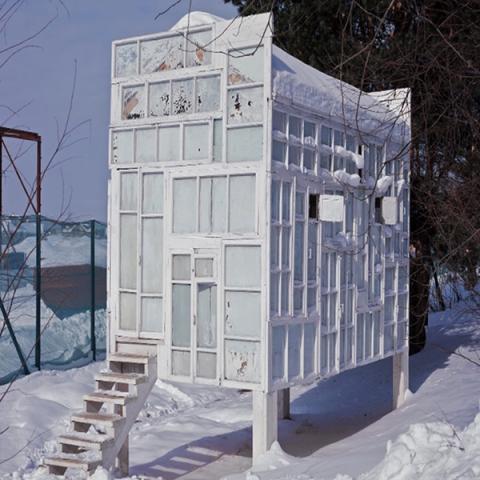
TRADIZIONE E INNOVAZIONE NEL RETROFIT ENERGETICO DEI SERRAMENTI STORICI:
Lo scritto si propone di indagare, mediante una literature review, le misure di retrofit energetico e lo sviluppo di nuove soluzioni tecnologiche sperimentali, anche con materiali innovativi, per la componente finestre. Il lavoro ha richiesto la valutazione di molte pubblicazioni, provenienti da diversi campi disciplinari, per un totale di 133 testi tra articoli, guide e report di ricerca. Il risultato è una panoramica quanto più completa possibile dello stato dell’arte della ricerca scientifica in questo campo.
TRADITION AND INNOVATION IN ENERGY RETROFIT OF HISTORIC WINDOWS:
Through a literature review, this paper aims to investigate energy retrofit measures and the development of new experimental technological solutions for the window component, also with the use of innovative materials. This work required the assessment of many publications, related to various disciplinary fields, for a total of 133 documents which include papers, booklets and research reports. The result is an as complete as possible view of the research status on window interventions.
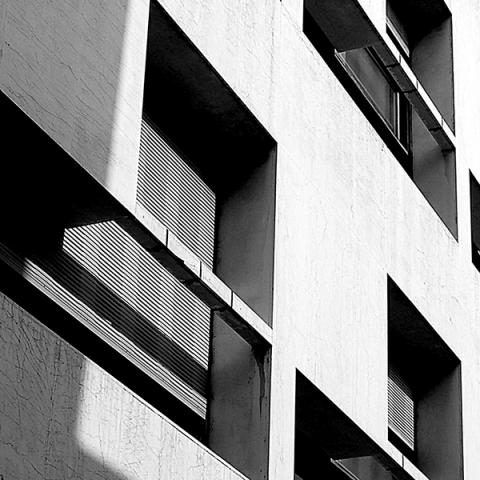
SERRAMENTI GENOVESI DAL MEDIOEVO ALL’OTTOCENTO
Il contributo propone un sintetico excursus storico sui serramenti in uso dal Medioevo fino all’Ottocento, sulla base sia di informazioni desunte dai documenti d’archivio, sia di osservazioni condotte su esemplari in opera negli edifici genovesi (portoni di palazzi e chiese, porte interne, finestre vetrate e scuri). Un breve approfondimento è dedicato ad alcuni interessanti infissi datati con la dendrocronologia al Cinquecento e al Settecento.
GENOESE DOORS, WINDOWS AND SHUTTERS FROM MIDDLE AGE TO THE NINETEENTH CENTURY
The paper proposes a synthetic historical excursus on the windows and doors used from the Middle Ages to the nineteenth century, based on both information taken from archival documents and observations carried out in Genoese buildings (doors of palaces and churches, interior doors, glazed windows, shutters). A brief investigation is dedicated to some interesting doors and shutters dated to the XVI and XVIII centuries by the dendrochronology.
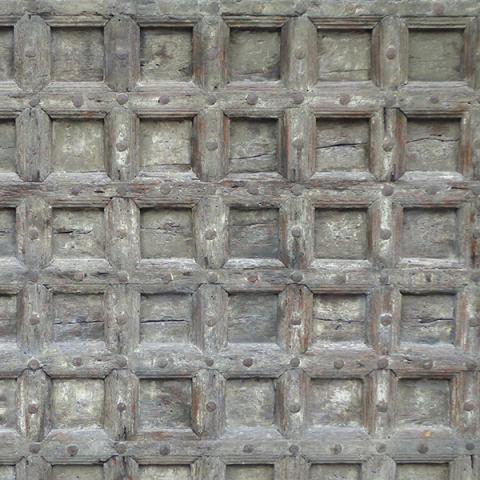
VERSO UNA CRONOTIPOLOGIA DEI SERRAMENTI
I serramenti non costituiscono solo un oggetto di studio ricco di informazioni per la storia della costruzione degli edifici e dell’abitare, ma possono diventare essi stessi un indicatore cronologico. Qui si presenta un tentativo di dare corpo ad un sistema rigoroso di studio e confronto per la messa a punto di una vera e propria cronotipologia dei serramenti stessi e dei loro diversi componenti. Si racconta inoltre un esempio di studio di un serramento che ha su di sé i segni di tutti i passaggi significativi della storia del suo palazzo.
TOWARDS A CHRONOTYPOLOGY OF WINDOWS AND DOORS
The windows and doors are not just a study object rich in information for the history of building construction and living, but they can themselves become a chronological indicator. Here an attempt is made to embody a rigorous system of study and comparison for the development of a real chronotypology of the windows and their different components. It also tells an example of a study of a window that has signs of all the significant passages in the history of its building.
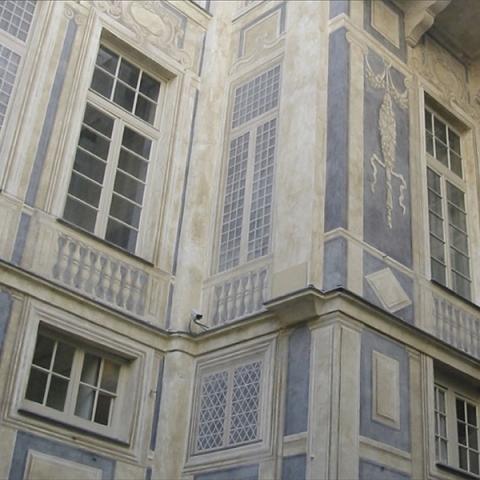
CONSERVAZIONE DI INFISSI STORICI E RISPARMIO ENERGETICO
Gli infissi storici sono spesso oggetto di sostituzione per soddisfare le esigenze di efficientamento energetico richieste dalla normativa italiana ed europea. In Italia è prevista la possibilità di deroga nel caso di infissi facenti parte di beni culturali. Una ricerca inglese del 2009, realizzata per English Heritage, dimostra la possibilità di migliorare la performance termica degli infissi esistenti con metodi tradizionali relativamente semplici, così come realizzato in un piccolo intervento del MiBACT su una porta finestra di Palazzo Reale di Genova.
RESTORATION OF HISTORIC WINDOWS FRAMES AND ENERGY SAVING
Historical windows are often the subject of replacement in order to improve energy efficiency requirements required by Italian and European legislation. In Italy there is the possibility of derogation in the case of windows belonging to cultural heritage. A 2009 english research, carried out for English Heritage, demonstrates the possibility of improving the thermal performance of existing windows with relatively simple traditional methods, as done in a MiBACT small intervention on a window in Palazzo Reale - Genoa.
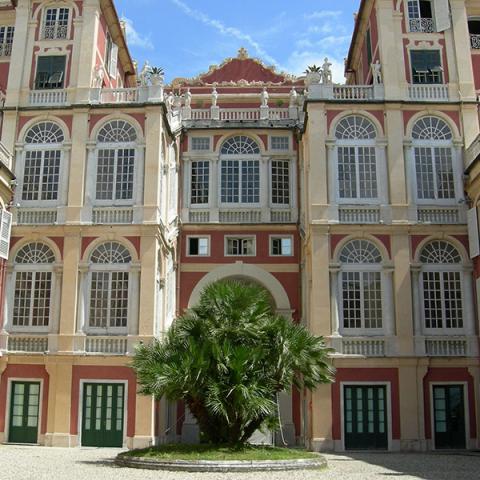
LA CONSERVAZIONE DEI SERRAMENTI DEL PASSATO
In Italia, anche nell’ambito del restauro, l’attenzione ai serramenti avanza a grande fatica, mentre le perdite crescono quotidianamente. Dominano idee infondate di risparmio energetico e mancano una cultura e una pratica della manutenzione-riparazione. Troppo a lungo del patrimonio architettonico si sono volute proteggere le grandi linee della compagine muraria e la materia da difendere si è limitata alle “superfici decorate”. Un panorama sulla letteratura tecnica europea, fra ombre e luci, può forse favorire un’inversione di rotta.
THE WINDOW FRAMES OF THE PAST AND THEIR CONSERVATION
In Italy, the attention for the window frames scrabbles also throughout the field of the preservation, since the losses daily increase. Unfounded ideas of energy saving prevail, instead both culture and practice of the maintenance and repair need. Too longer the protection of the architectural heritage meant only conserve the outline of building, not its details, and the substance to safeguard was restricted to the “decorated surfaces”. A review, with lights and shadows, of the european technical literature can perhaps favour a turnaround.
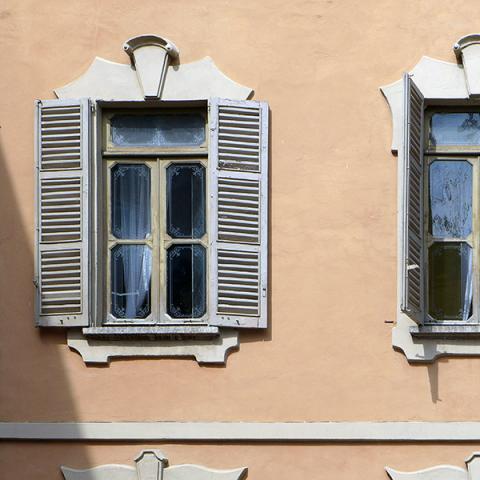
FINESTRE TRA CONVENIENZA, DECORO E COMFORT
Alla metà del XVIII secolo la residenza del Governatore dello stato di Milano è oggetto di trasformazioni intese ad adeguarne il decoro, la comodità e il comfort alle moderne consuetudini abitative. Anche le finestre contribuiscono alla qualità complessiva dell’architettura grazie all’introduzione di alcune innovazioni che consentono di adeguarne le prestazioni a diverse esigenze d’uso. Questo contributo si focalizza sulle relazioni tra costume abitativo, modi d’uso, conoscenze e saperi tecnici applicati alla costruzione e manutenzione delle finestre.
WINDOWS BETWEEN APPROPRIATENESS, DECOR, AND COMFORT
In the mid-Eighteenth century the residence of the Governor of the State of Milan is shaped according to modern living habits improving decorum, suitability, and comfort. Even the windows contribute to the overall quality of the architecture thanks to the introduction of some innovations that allow to adapt their performance to different usage requirements. This paper focuses on the relationships between customs and conventions that regulate social life of upper classes, professional and technical knowledge applied to the construction and maintenance of windows.
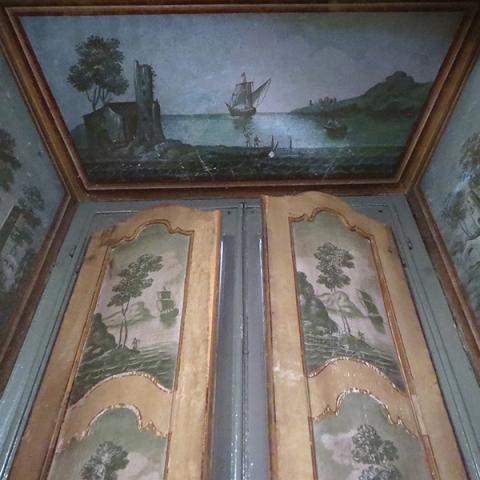
UN SERRAMENTO SECENTESCO
L’articolo riporta le fasi del restauro di un raro serramento secentesco, significativo per le sue dimensioni, la sua qualità costruttiva e la presenza di ferramenta e vetri originari. L’intervento di restauro si prefigge di ripristinare la funzionalità del serramento e, anche attraverso interventi finalizzati alla riduzione delle cause scatenanti i degradi, la conservazione materiale del manufatto.
A XVIITH CENTURY WINDOW IN PALAZZO MAGIO GRASSELLI IN CREMONA
The article reports the phases of the restoration of a rare seventeenth century window, significant for its size, its refined construction and the presence of original iron hardware and glass. The purpose of the intervention is to restore the functionality of the window and the material preservation of the artefact also through interventions aimed at reducing the causes of degradation.
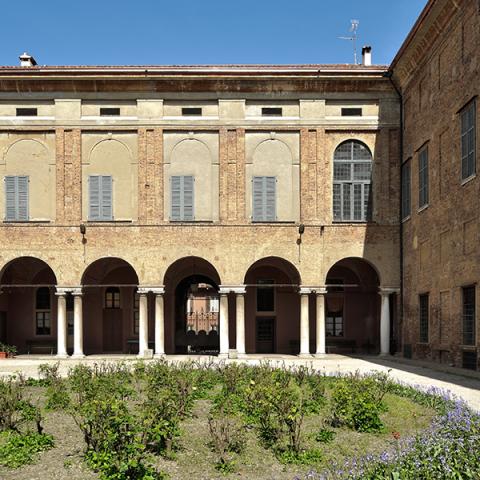
LA TUTELA DEI SERRAMENTI TRA EFFICIENZA ENERGETICA E CONSERVAZIONE MATERIALE
Il contributo affronta il tema della conservazione dei serramenti storici mettendo in evidenza la necessità di trovare un punto di convergenza tra le esigenze prestazionali richieste dalla normativa o, più semplicemente, da uno standard abitativo ormai consolidato, e le esigenze di tutela e di conservazione dei sistemi costruttivi storici che contribuiscono significativamente a definire il carattere delle architetture.
THE PROTECTION OF WINDOWS BETWEEN ENERGY EFFICIENCY AND MATERIAL CONSERVATION
This contribution faces the issue of the conservation of historic windows, highlighting the need to find a point of convergence between the performance levels required by the legislation or, more simply, by a well-established housing standard, and the needs of protection and conservation of the historical systems that contribute to define significantly the character of the architecture.
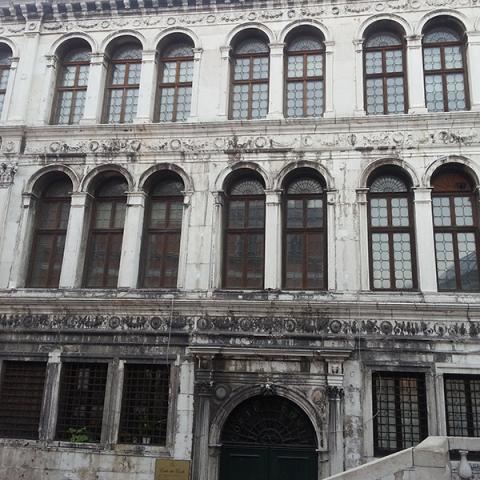
SERRAMENTI STORICI A VENEZIA
I serramenti dell’edilizia storica di Venezia, a differenza di altre componenti, come le murature e gli intonaci, sono stati meno studiati, eppure integrano la composizione dei fronti edilizi in modo determinante rispetto alla percezione dei volumi e delle cortine edilizie. La relativa fragilità e la spiccata propensione ad essere sostituiti nel tempo, spesso anche in modo disinvolto, per garantire la necessaria funzionalità, ha minato alla base la possibilità di letture dirette, se si eccettuano alcuni casi fortunatamente conservati. Questo fatto ha determinato, al fine di approfondirne la conoscenza, la necessità di fare riferimento fonti d’archivio, documentali e iconografiche.
Il contributo mira a raccontare e spiegare i principali caratteri di tali elementi, la spiccata perizia costruttiva che ne ha reso possibile la fabbricazione, nonché assetti storici e vicende evolutive, indagando i rapporti dimensionali e le relazioni dei serramenti con il contesto architettonico.
THE HISTORICAL WINDOW FRAMES IN VENICE
Unlike other components, such as walls and plasters, the doors and windows of the historic buildings of Venice have been less studied, yet they integrate the composition of the building fronts in a decisive way with respect to the perception of volumes and building curtains. The relative fragility and the marked propensity to be substituted over time, often in a casual way, to ensure the necessary functionality, has undermined the possibility of direct readings, except in some cases fortunately preserved.This fact has determined, in order to deepen the knowledge, the need to refer to archive sources, documental and iconographic.
The contribution aims at telling and explaining the main features of these elements, the strong constructive expertise that made it possible to manufacture them, as well as historical structures and evolutionary events, investigating the dimensional relationships and the relationships of the windows and doors with the architectural context.
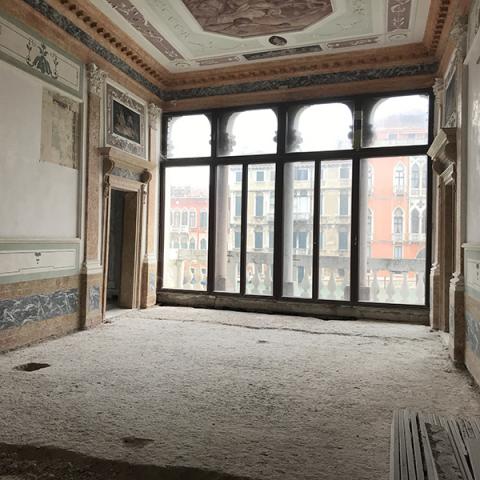
SERRAMENTI STORICI A VENEZIA
Il tema del miglioramento energetico degli edifici storici ed in particolare lo studio del serramento vive un rinnovato interesse ed è in continuo divenire. Si è cercato in questa sede di raccogliere una serie di casi di intervento osservabili nella città di Venezia al fine di capire come poter agire su di esso nell’ottica di un miglioramento del comfort interno rispettoso dell’identità storica e materiale della chiusura trasparente.
THE HISTORICAL WINDOW FRAMES IN VENICE
The theme of the energy improvement of historic buildings and in particular the study of the window frame is experiencing a renewed interest and is constantly evolving. An attempt has been made here to collect a series of observable cases of intervention in the city of Venice in order to understand how to act on it with a view to improving internal comfort respectful of the historical and material identity of the transparent closure.
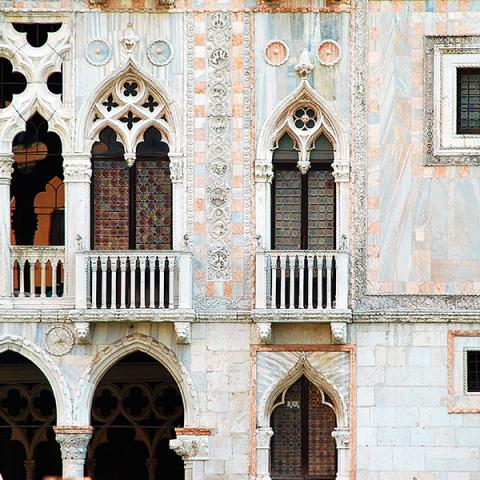
PER UN ATLANTE DEI SERRAMENTI STORICI IN EMILIA
I serramenti storici in area emiliana sono qui documentati attraverso la scelta di alcune porte interne e finestre/portefinestre: queste sono fra le componenti più delicate dell’edilizia storica, che spesso vanno perdute. Gli esempi sono tratti dal Palazzo Avogli Trotti di Ferrara e dal Castello di Bianello, in provincia di Reggio Emilia, e costituiscono una prima rassegna per un auspicabile atlante, inteso come strumento per la comprensione degli aspetti costruttivi e produttivi dei serramenti storici.
TOWARDS AN ATLAS OF HISTORICAL WINDOW AND DOOR FRAMES IN EMILIA
The historical fixtures in the Emilia area are here documented by selecting some internal doors and windows/glazed doors: these are the most fragile components of historical construction, and often are lost. The examples focus on the Palazzo Avogli Trotti, in Ferrara, and the Castle of Bianello, nearby Reggio Emilia, and constitute a first review looking for an atlas, intended as a tool to comprehend the construction and the production features of historical windows.
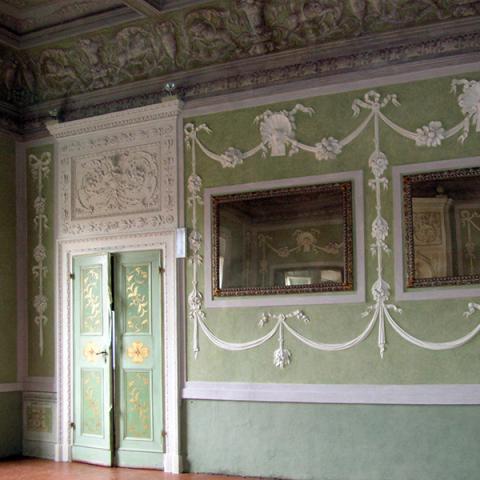
SERRAMENTI STORICI NEL LAZIO
La disamina degli infissi storici nel Lazio restituisce i caratteri di componenti fragili dell’architettura, sottoposte nel tempo a integrali sostituzioni o a indebite trasformazioni. Anche in virtù del ruolo figurativo a queste assegnato nella definizione dell’immagine architettonica
e urbana, la conoscenza delle loro principali tipologie, talvolta esclusivamente desumibili dalle rappresentazioni dipinte conservate sulle facciate, contribuisce a incentivarne la conservazione.
HISTORICAL WINDOWS AND DOORS IN LATIUM
The survey of historical windows and doors in Latium describes the features of fragile components which have been often completely substituted or transformed. Taking and figurative role in the architectural and urban image into consideration, the knowledge of their main typologies – sometime exclusively given by the painted representations on historical façades – helps to improve their conservation.
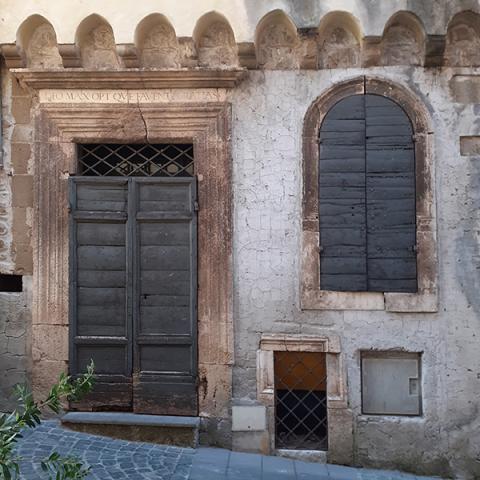
CONOSCENZA E CONSERVAZIONE DEI SERRAMENTI STORICI NEL RESTAURO
Da una preliminare indagine in Abruzzo emerge una scarsa considerazione dei serramenti storici sia sul fronte della conoscenza che sul piano della conservazione e, più in generale, su quello del restauro dell’architettura. Accanto alla sopravvivenza e manutenzione di finiture di singolare ‘pregio’ si rileva, in particolare nell’ambito della ricostruzione post-sismica in corso, un’estesa perdita di tali elementi di cultura materiale, spesso sopravvissuti grazie a lunghi periodi di abbandono.
KNOWLEDGE AND PRESERVATION OF HISTORIC WINDOWS IN THE ARCHITECTURAL CONSERVATION
A first survey in Abruzzo shows a poor consideration of historical windows and doors both on the front of historical knowledge and on the level of materic preservation and architectural conservation. The maintenance of a few valuable finishing works contrast with a far more extensive loss of weak evidences of cultural heritage, sometimes survived thanks to long periods of abandonment.

INTERVENIRE SUI SERRAMENTI STORICI, TRA SOSTENIBILITÀ E CONSERVAZIONE
L’articolo racconta parte di un’esperienza di collaborazione intercorsa tra Politecnico di Milano e Regione Sicilia verso la definizione di interventi di efficientamento energetico per 106 immobili del Dipartimento dei Beni Culturali. Partendo dal descrivere il percorso progettuale in atto, il testo si focalizza sul tema del recupero dei serramenti storici in una selezione di 38 casi rappresentativi. Si delineano infine alcune considerazioni sui possibili interventi di miglioramento energetico, valutandone i relativi vantaggi.
INTERVENING ON HISTORIC WINDOWS, BETWEEN SUSTAINABILITY AND CONSERVATION
This article describes part of a collaboration experience between the Politecnico di Milano and the Sicily Region towards the definition of energy efficiency interventions for 106 buildings of the Department of Cultural Heritage. Starting from describing the project path in progress, the text spotlights the topic of the recovery of historic windows in a selection of 38 case studies. Finally, some considerations on possible energy improvement measures are outlined, evaluating the relative advantages.
